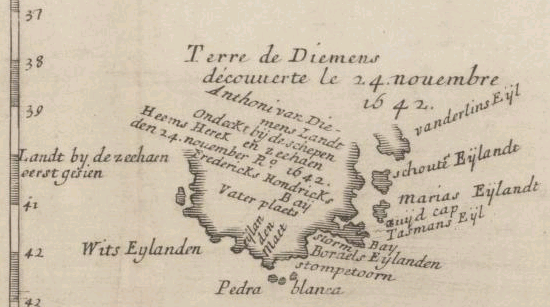The state I live in is now called Tasmania but was once called Van Diemen’s Land.
The Palawa or Aboriginal Tasmanians were first on this island. When the rising sea level cut off the island from the mainland of Australia, the Palawa were isolated from contact with the aborigines on the mainland.
Their first knowledge of Europeans was when Abel Janzsoon Tasman landed in 1642 and planted a Dutch flag near what is now the town of Dunalley on what was then called Blackman Bay. There was no contact with the aborigines though.
It was at this time the island was named Anthoonij van Diemenslandt (Anthony Van Diemen’s land). This was in honour of the Governor General of the Dutch East Indies.
During the early colonisation of Australia the name Van Diemen’s Land (VDL) was used and it was part of the colony of New South Wales. But in 1825, VDL became a colony in its own right. Then on 1 January 1856, it was renamed Tasmania.
The new name was to celebrate Tasman as the early explorer but also to get rid of the notorious convict past of VDL.
How does VDL relate to my family?
Nearly all my ancestors first arrived when the colony was known as VDL.
Convicts:
- Francis Colgrave – 1832 – ship Circassian
- Isabella Watkins(on) – 1841 – Garland Grove
- John Holliday Boyd – 1836 – Henry Porcher
- Martha Virco nee Hearn – 1839 – Hindostan
- John England – 1846 – Pestonjee Bomanjee
- Rebecca Jackson – 1847 – Waverley
- William Dawson – 1850 – Maria Somes (2)
- Catherine McKay – 1848 – Cadet (3)
- Mathew Sutton – 1840 – Mandarin
- Mary McCrewney – 1848 – Kinnear (2)
Free settlers:
- John Davey – 1854 – Wanderer
- David and Mary Dixon nee Pickering – 1841 – Andromeda
- William Chandler – 1855 – Fortitude
- Caroline Bryant – 19 Jan 1856 – La Hogue – would have arrived during celebrations of new name Tasmania


